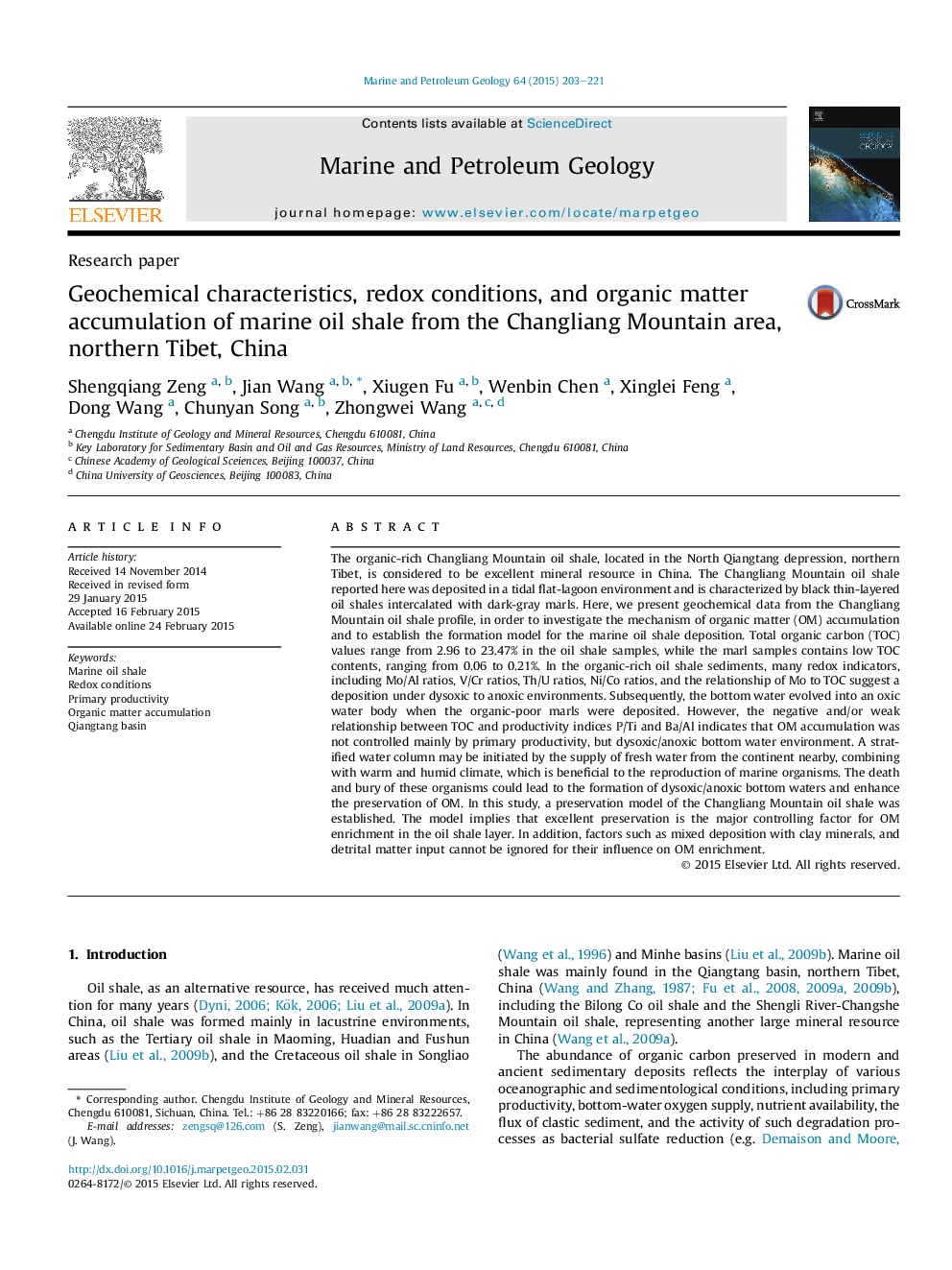| کد مقاله | کد نشریه | سال انتشار | مقاله انگلیسی | نسخه تمام متن |
|---|---|---|---|---|
| 6435151 | 1637161 | 2015 | 19 صفحه PDF | دانلود رایگان |
- TOC contents and multiple geochemical proxies were investigated.
- Organic-rich oil shales deposited in dysoxic to anoxic water columns.
- Organic enrichment was attributed to redox condition and stratified water column.
- A preservation model of the oil shales is established.
The organic-rich Changliang Mountain oil shale, located in the North Qiangtang depression, northern Tibet, is considered to be excellent mineral resource in China. The Changliang Mountain oil shale reported here was deposited in a tidal flat-lagoon environment and is characterized by black thin-layered oil shales intercalated with dark-gray marls. Here, we present geochemical data from the Changliang Mountain oil shale profile, in order to investigate the mechanism of organic matter (OM) accumulation and to establish the formation model for the marine oil shale deposition. Total organic carbon (TOC) values range from 2.96 to 23.47% in the oil shale samples, while the marl samples contains low TOC contents, ranging from 0.06 to 0.21%. In the organic-rich oil shale sediments, many redox indicators, including Mo/Al ratios, V/Cr ratios, Th/U ratios, Ni/Co ratios, and the relationship of Mo to TOC suggest a deposition under dysoxic to anoxic environments. Subsequently, the bottom water evolved into an oxic water body when the organic-poor marls were deposited. However, the negative and/or weak relationship between TOC and productivity indices P/Ti and Ba/Al indicates that OM accumulation was not controlled mainly by primary productivity, but dysoxic/anoxic bottom water environment. A stratified water column may be initiated by the supply of fresh water from the continent nearby, combining with warm and humid climate, which is beneficial to the reproduction of marine organisms. The death and bury of these organisms could lead to the formation of dysoxic/anoxic bottom waters and enhance the preservation of OM. In this study, a preservation model of the Changliang Mountain oil shale was established. The model implies that excellent preservation is the major controlling factor for OM enrichment in the oil shale layer. In addition, factors such as mixed deposition with clay minerals, and detrital matter input cannot be ignored for their influence on OM enrichment.
Journal: Marine and Petroleum Geology - Volume 64, June 2015, Pages 203-221
